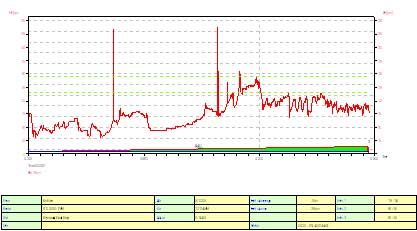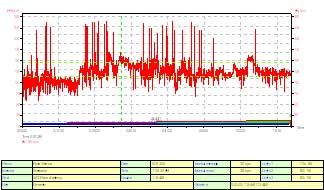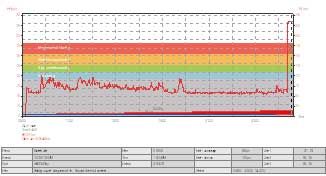By Kathleen Vonk and Tricia Sterland
Special Contributors to Police1
Controlling and listening to your body is easier said than done for most people. Add adrenaline and physical exertion to the mix in the law enforcement profession and it becomes even more difficult. A simple tool like a heart rate monitor makes it easy for line warriors and trainers alike to improve critical performance through biofeedback.
The very basic use of heart rate monitors lies in the physical fitness arena, and their uses are spreading across the country in basic police academies. The Washtenaw Community College (WCC) Police Academy in Ann Arbor Michigan has been using Polar heart rate monitors in many disciplines since 2002, to include physical fitness, firearms training, emergency operations, and reality-based training.
The technology has been around for years but the business of law enforcement has not tapped into its uses to any considerable degree – and missing out on some pretty significant advantages.
FITNESS PROGRAMS: In police academy and in-service physical fitness programs, the heart rate monitor can be used to ensure an officer or cadet is training at the proper intensity based on the desired outcomes. The officer, instructor, or cadet is able to check this “at a glance” while wearing a monitor on the wrist and make adjustments accordingly. For example, while on a run, the wearer is able to look down at the monitor and know immediately what his or her heart rate is, then either increase or decrease running speed depending on whether the desired outcome is to burn fat, increase tolerance to lactic acid, or stick to recovery intensity.
FIREARMS TRAINING: The monitor can also be used to tap into stress performance improvement on the range. Poor shooting performance can be the result of poor technique or high stress. The errors in technique must be addressed in an appropriate manner, but the stress issues can sometimes be identified through the use of a heart rate monitor. Unusually elevated heart rates while engaging in firearms training and qualification (which does not incorporate physical exertion) can indicate higher stress levels. Once an issue is identified, stress-reducing techniques can be taught and implemented to bring stress levels back to an acceptable operating range for that person.
EVOC AND RBT: During emergency vehicle operations and Reality Based Training ™, heart rate monitors can aid in controlling stress in the same fashion described above. Another advantage to its use is the objective empirical data that can easily be extracted and displayed if need be, by downloading the data to a laptop computer via infrared interface and printing off a color graph to display the heart rate curve. Both instructors and cadets/officers alike have their own biofeedback learning tool which will help them understand their own bodies’ responses to stressful activities, utilize effective stress reduction techniques, and ultimately improve their performance.
In one WCC Police Academy case the use of heart rate monitors resulted in the discovery of a heart murmur and in another the voluntary withdrawal of a cadet due to suspected but unverified reasons. In another incident, two cadets engaged in a verbal altercation and both happened to be wearing heart rate monitors. The “bully” showed a negligible increase in heart rate whereas the graph of the bullied cadet elevated significantly due to mental stress and the chemical dump (adrenaline, epinephrine, norepinephrine, cortisol, vasopressin, aldosterone, etc). In some academies, heart rate monitors are being utilized to demonstrate objective and impartial data supporting subjective evaluation of poor performance in RBT, thus resulting in further training and/or dismissal from pre-service academies. Here are two examples from the WCC Police Academy; the first EVOC training and the second an RBT domestic violence scenario utilizing Simunitions.
Figure 1 |
Notice the infrequent heart rate spikes in Figure 1, indicating low frequency of startle response in the cadet engaged in EVOC training. Also take note of the elevated heart rate curve, when there is very little physical exertion if any. This could indicate that the cadet is not easily startled, recovers from those infrequent occurrences rather quickly, and performs well under high levels of stress as indicated by the heart rate curve absent
Figure 2 |
In Figure 2, during a RBT scenario the second cadet displays a rather different heart rate curve with frequent spikes and a lack of recovery from those startle responses. In this case, this cadet’s heart rate curve was accompanied by poor performance. It is a very common occurrence that multiple spikes accompany poor performance, and the graph is objective data to support an argument for further training or dismissal. In this example, this particular cadet may benefit from self-awareness training through biofeedback (heart rate awareness), mental imagery, positive self-talk, tactical breathing, or other interventions that are mentioned later on in this article.
In a trial program, the Ann Arbor Police Department in Michigan took the use of the heart rate monitors a step further and utilized the technology for in-service RBT as well as on duty for those officers who volunteered. Some incidents which may be considered high stress both physically and psychologically such as foot pursuits and forcible arrests have been captured and vividly displayed in color graphs. Their use made some officers and FTOs aware of personal optimal functioning levels so that active steps could be taken to master their own stress and performance. This in turn leads to higher degrees of precision during execution while keeping one’s wits about them and stress levels within a reasonable range.
Compare Figure 3 to the previous graphs. Here, a veteran officer responds to a stabbing, stops a possible suspect in the area and makes the arrest. The heart rate curve barely gets above 100 beats per minute. Can you deduce which officer may better handle a lethal force encounter; the one whose graph is above or below?
Figure 3 |
Yes, experience has everything to do with performance under stress, but if there are tools that can help trainers expedite that learning curve; we can get cadets and rookies to their optimal performance levels much sooner in their careers.
MANAGING STRESS: Long term strategies to control and master one’s stress levels include biofeedback through the use of the Polar monitors, pre-planning, skill proficiency and confidence, stress inoculation through RBT, imagery, deep breathing and autogenic breathing, creating and maintaining positive social ties and relationships, proper nutrition, constructive hobbies, listening to appropriate music, getting adequate rest, concentration skills development, and of course exercising to your heart’s content thus creating physiological stress inoculation and releasing endorphins to achieve that “feel good” reward!
Immediate strategies that can be employed out on the street or in the field can be taught for when an operator realizes increased heart rates are resulting from elevated stress and are approaching unreasonable levels. Numerous immediate steps can be taken and taught. They include positive self-talk, mental imagery and rehearsal in 1st person, scanning to defeat tunnel vision, and of course tactical breathing, and will be discussed in upcoming articles.
Other uses of Polar Heart Rate Monitors include pre-selection standards for positions which may require a minimum level of physical fitness such as bicycle patrol, K-9, special operations, marine operations, fitness instructors, and street patrol! These can be further deciphered into specific specialties based on task complexity. Consider who would be more appropriate for each task; the adrenaline junkie who loves to get down-and-dirty and a flat-liner who never gets riled up regardless of the stimulus.
About the Authors
Tricia Sterland, MS, CSCS, is an Exercise Physiologist and Business Development Manager for Polar Electro Inc. She is currently in charge of the Law Enforcement/Government Program for Polar Electro, through which agencies are afforded the opportunity to purchase products at a significantly reduced cost. She is also conducting further research in these areas which will greatly benefit law enforcement, military, and firefighters in the areas of physical fitness and performance under stress. She can be contacted at 877-630-9924 (toll free) or Tricia.Sterland@Polarusa.com.
Kathleen Vonk, BA, BS, CSCS, has been a street officer since 1988. She is a Certified Strength and Conditioning Specialist (CSCS) by the National Strength and Conditioning Association (NSCA), and a Health Promotion Director by the Cooper Institute. She designed and implemented the Police Wellness Instructor Course for the Michigan Commission on Law Enforcement Standards, for which she is a subject matter expert, consultant and instructor-trainer. She is the primary fitness instructor for the Washtenaw Community College Police Academy in Ann Arbor Michigan. She is an adjunct instructor for Team One Network and formerly for Heckler & Koch International Training Division (H&K). Her work on heart rate and performance under stress is included in Ken Murray’s Training at the Speed of Life as well as Michael Asken’s Mindsighting: Mental Toughness for Police Officers in High Stress Situations. She co-owns LouKa Tactical Training, a Michigan based business that specializes in human performance improvement training www.loukatactical.com She can be reached at kathyvonk@aol.com.













